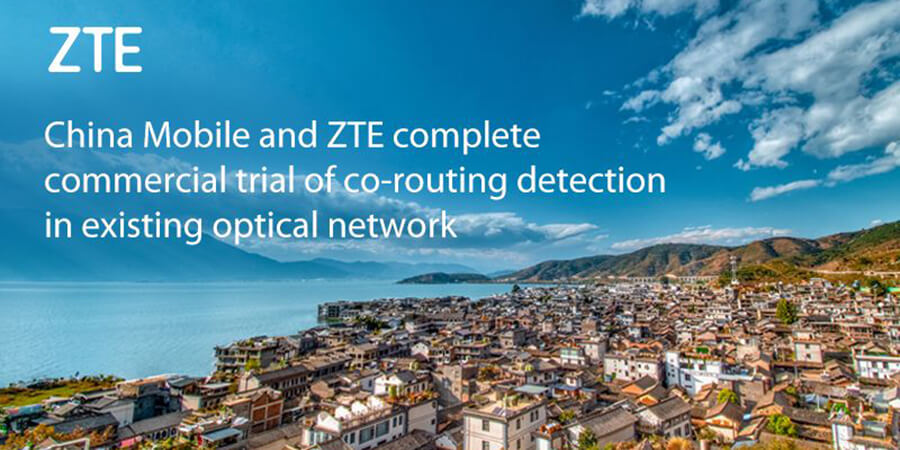ZTE, together with the Yunnan Branch of China Mobile, has completed the commercial trial of co-routing detection in China Mobile’s existing optical network in Yunnan province, China.
The trial involves two scenarios: co-cable routing detection and co-ditch routing detection. The trial result shows that there will be an early warning of active/standby paths in the same optical fiber or route so that it can be bypassed in time based on fiber sensing. In addition, the originally dumb fiber resource will be visualized. Thus, the operator's service reliability and network O&M efficiency can be greatly improved.
As digital transformation is developing rapidly in all industries, the optical network is facing a systems intelligence need. And intelligent O&M emerges as one of the main focuses when addressing the problem of low service survivability caused by co-routing.
To resolve this, China Mobile has cooperated with ZTE to verify the feasibility of co-cable and co-ditch routing detection of service paths on the existing network, including active/standby service routing detection and inbound/outbound service route detection at specific sites.
According to the verification, ZTE's optical network co-routing detection function can specifically detect co-cable routing of 14 optical cables and 54 fiber cores by dynamic parameter optimization, AI algorithm and experience threshold adjustment. Also, ZTE takes contrast analysis and on-site specialist inspection to exactly detect co-ditch routing of 12 optical cables and about 20 ditches in 4 core equipment rooms. The verification proves that ZTE can provide the operator with flexible optical network co-routing detection methods, along with real-time, accurate and reliable intelligent O&M measures, which well guarantees service survivability and alleviates the difficulty in dumb fiber resource management.
"The function can effectively solve actual problems in production and operation. Before this, active/standby routes are planned on the resource management map and routing is determined manually, which leads to high error rate. Additionally, the accuracy of resource management information is hardly under control, thereby increasing routing risks,” said a spokesperson at the Network Management Center of China Mobile Yunnan.
“In the original routing detection, people pulled or pushed the cable underground manually, which resulted in low efficiency and service interruption. However, the co-routing detection now leverages dumb fiber resources without service switching. The innovative function remarkably reduces manpower and ensures service survivability while allowing resource management information modifications and route re-planning to avoid service interruption losses," he added.
The trial will further promote the growth of the operator's autonomous optical network and lay a strong foundation for its intelligent network in the “east-data-west-computing” project.






